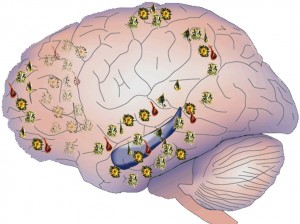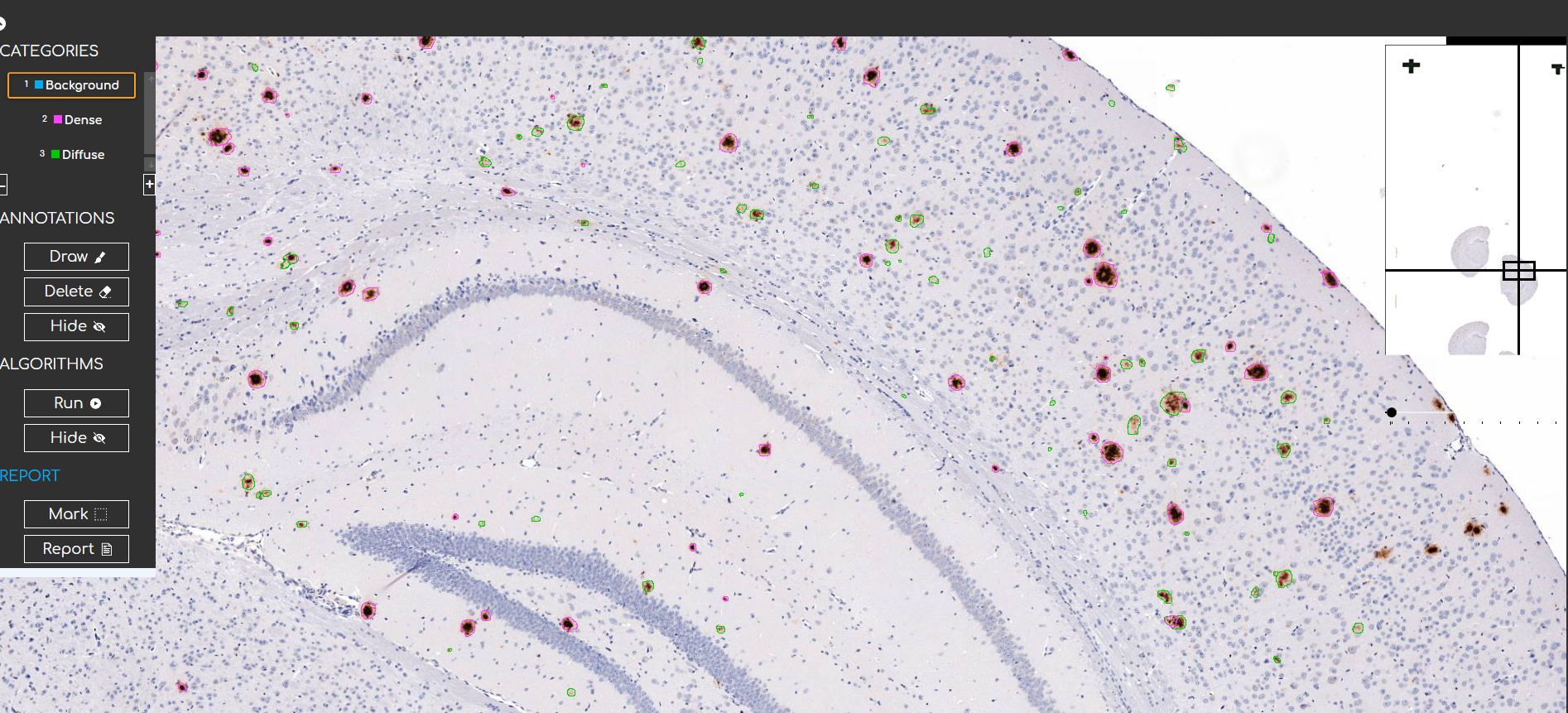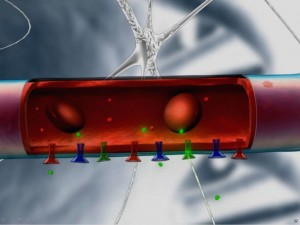Alzheimer’s Disease (AD)
AD is the most common neurodegenerative disease. Although it is wide spread, the cause of AD is still unknown. Therefore diagnosing AD is only possible as first symptoms appear. When patients or their relatives recognize memory problems, thousands of neurons already died because of aggregated proteins (intracellular tau fibrils and extracellular amyloid beta).

Huntington’s disease (HD)
HD patients show improvement of their clinical course if treatet with plant extracts that activate ABC transporters. From our morphological assessment in brain tissue we also know that ABC transporters are specifically expressed in the Caudate nucleus. We currently investigate the fucntional effects of ABC transporters A7 and C1 in a new zQ175dn mouse model.
Artificial Intelligence in Pathology / Histology
Together with DeePathology.AI Ltd. we develop tools to automatically assess morphological changes in histological sections for diagnostic and research purposes.

OMICS analyses in Neurodegenerative Diseases
Proteomics, lipidomics and metabolomics mass spectrometry analyses and Mass Spectrometry Imaging (MSI) are currently applied to detect metabolites from brain tissue of rodent disease models. The technology is used by us to map new treatment targets and metabolite locations within specific morphological structures of the brain at different disease stages and in different disease models.

ABC transporters at the blood-brain barrier
ATP-binding cassette (ABC) transporters belong to a large superfamily of proteins that utilize energy in form of ATP (adenosine tri-phosphate) to transfer an immense diversity of substances from one side of a cellular membrane to the other. In men, the direction of this transport is always outwards and can generate even large concentration gradients as seen at neurons where they are essential for neuronal function.

The brain’s barriers
The human brain is highly protected from all environmental threads, especially those that might come with the blood stream. Here, the protection and nutrition of the brain is maintained by the blood-brain barrier (BBB) and the blood-choroid plexus barrier (BCPB). The BCPB is made up by the choroid plexus, which separates the blood stream from the cerebrospinal fluid that circulates through the ventricles, the subarachnoidal spaces and along perivascular drainage pathways alongside brain vessels. The latter are in close proximity to the vascular BBB that consists of tightly interconnected endothelial cells, which constitute the inner layer of the brain’s capillaries, working in concert with the surrounding cell types (mainly pericytes and astrocytes).

Beneficial effects of herbal extracts for AD prevention and treatment
During the search for ABC transporter-activating compounds we gathered information about ancient medicinal plants that have been used for the treatment age-related memory problems in different regions of the world. We started to investigate these facts and discovered that Sideritis scardica (Greek Ironwort) and Hypericum perforatum (St. John’s wort) can be used as anti-dementia therapy if extracted specifically.

Genetics of sporadic Alzheimer’s disease
Less than 2% of all AD patients suffer from a familiar (inherited) form of AD that is caused by specific genes. In contrast, the cause of sporadic AD affecting >98% of AD patients is still unknown. To unravel this mystery, we use existing knowledge about familiar AD and extend it to our research field of ABC transporters and mitochondrial regulation.

Functional ABC transporter-imaging
The combination of Magnetic-Resonance Imaging (MRI) and Positron-Emission Tomography (PET) as MR/PET-imaging created a powerful tool for clinical diagnostics and research. The detection of weakly radiolabeled small molecules that bind to defined proteins and location of that signal to a distinct structure in, for example, the brain enables physicians and scientist to analyse the function of proteins, metabolic activity of regions of interest or accumulation of peptides in real time.

New diagnostic tools
Currently, early diagnosics of neurodegenerative diseases is hampered due to the fact that the specific mechanisms are often unknown that lead to the deposition of the toxic peptides in the effected brain regions. Inherited cases have been used to decipher the pathways but have failed to be transfered to sporadic forms that often comprise the majority of the patients (e.g. 98% in Alzheimer’s disease). We develop combined genetics and blood-based tools to correlate the clinical setting with the function of the blood-brain barrier.

ABC transporter function in Multiple Sclerosis (MS)
MS / encephalomyelitis disseminata is a neuroinflammatory disease that attaccs the white matter in the brain. ABC transporter may play an important role in disease modulation as we have found in preliminary investigations. We have been working many years with the EAE mouse model (experimental autoimmune encephalitis) and are currently using our newly established humanized ABC transporter mice (hABCA7 and hABCC1) to analyse ABC transporter function for disease modulation in EAE.